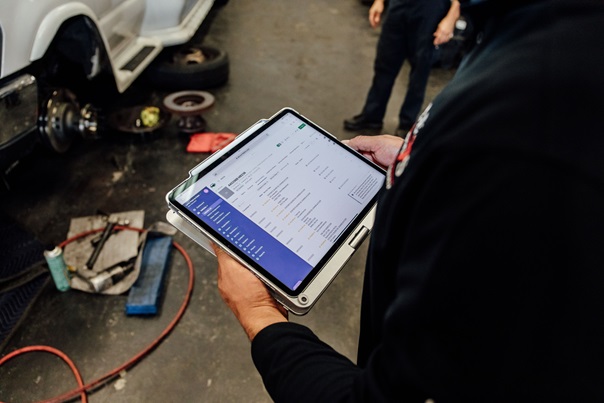
By Rachael Plant, Content Marketing Specialist, Fleetio
December 13, 2023
Every year end, industry experts make predictions for the coming years’ trends. But just how accurate are these predictions? Well, predicted trends are largely based on markets related to the industry — and the global market as a whole — so any trend heavily influenced by economic and policy pressure is less likely to be accurate. Let’s call these ‘flexible trends.’
A good example of a flexible trend would be: EV sales will hit an all-time high in such and such year. Based on historical sales trends, this seems like a safe bet, since according to The Center for American Progress, from the year before the Inflation Reduction Act’s passage to present, “electric vehicles (EVs), including plug-in hybrids, have jumped from 4.4 percent to 9.9 percent of new passenger vehicle sales.” The Inflation Reduction Act – a policy that went into place mid-year – incentivized EV manufacturing and sales which, in turn, affected that growth and demand. Those same incentives have an end date, though, which could lead to stagnant or decreased EV sales.
Conversely, you have… let’s call them ‘steady trends.’ Steady trends tend to pertain to third-party tools or solutions used by the industry, but which the industry doesn’t rely on to continue running. These are things like cloud-based fleet management software (FMS) — or more generally, digital solutions — versus replacement parts, which are essential.
General industry trends can be quite useful as an overview of what to expect broadly, but knowing how to identify flexible versus steady trends and by what conditions they are impacted, you can more accurately predict future trends. In 2023, there were four main fleet industry trends — three flexible and one steady — that showed up on lists across multiple sources: supply chain issues, autonomous vehicle (AV) use, electric vehicle (EV) adoption and increased data accessibility and use.
Supply Chain Issues
From computer components to building and trade supplies and, of course, vehicles, the whole supply chain issue has been an ongoing one since 2020. The supply chain was heavily impacted by the pandemic, followed by wars, strikes and supply shortages.
- Prediction accuracy score: 7/10
- 2024 prediction: Look for the continuation of supply chain issues going into 2024, this time with the looming potential of a recession.
AV Use
You can find some iteration of this trend on lists dating back to 2020 — and probably further. While AV technology is trucking right along, it’s not really doing so with enough umph or at a fast enough pace for it to have reached any 2023 trends list. Considering the slow, drawn-out adoption process of EVs once they were — for the most part — widely available, it stands to reason that AVs won’t be prolific enough in the industry to be considered a trend for a while yet.
- Prediction accuracy score: 2/10
- 2024 prediction: There may be a rise in utilization of ‘the connected vehicle’ as its own telematics device, moving the solution from plug-and-play to built-in and reducing the number of issues associated with the supply chain.
EV Adoption
EV adoption — yet another long-time lister — has finally reached the point where it may actually deserve its spot on the 2023 trends list. According to Tom Randall with Bloomberg, the share of new EV car sales “exceeded 7% for the first half of the year, speeding past a critical tipping point for mass adoption. […] It took 10 years for the U.S. to sell its first million fully electric vehicles, two years to reach the second million, and just over a year to reach the third. By the time the latest quarter’s figures are tallied up…the country should be well on its way to a fourth.”
- Prediction accuracy: 8/10
- 2024 prediction: The potential of a moderate lull in EV sales over 2024 isn’t unrealistic, as some incentives are ending in December, and new incentive packages would need to be drawn up should an extension not happen. We may even see new performance data come out due to how many new EV wheels hit the road this past year.
Increased Data Accessibility and Use
There’s been a steady incline in fleet solution uptake over the past few years, and demand for them remains high. But because steady trends more-or-less aim to serve an industry need, there can be saturation in the market. Consider the amount of fleet solutions available today versus even three years ago, and you’ll understand what I mean. Unfortunately, a saturated market can end up creating a new need within the industry these companies are serving. For fleet, it has necessitated the need for data consolidation.
- Prediction accuracy: 10/10
- 2024 prediction: Anticipate a shift in fleet solutions toward easing consolidation woes, either through partnerships or integrations.
Understanding how predicted industry trends are chosen and how they are impacted by outside forces can help you gauge the likelihood of the trend so you can better account and plan for sudden shifts in trajectory.
About the author
Rachael Plant is a content marketing specialist for Fleetio, a fleet management software company that helps organizations track, analyze and improve their fleet operations.





